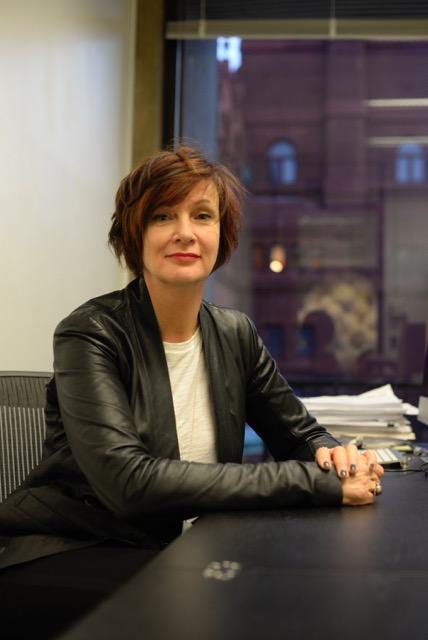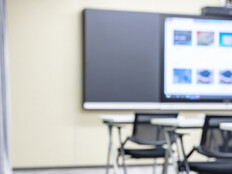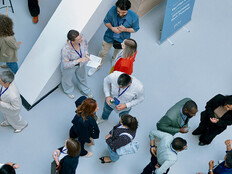Q&A: Winka Dubbeldam on Modernizing Courses with 3D Printing and Robotics
MakerBot is in partnership with the University of Pennsylvania to incorporate 3D printing into the institution’s architecture program to help students rethink how to design products, tools and even museum exhibits.
3D printing and robotics has taken over the makerspace sphere in K–12, turning heads in the higher education community. Students and professors have been inspired to use 3D printing to add new creative elements to their projects and course curricula.
Edtech spoke with Winka Dubbeldam, chair of the graduate architecture program at the University of Pennsylvania, to get a clearer picture of how 3D printing and other related technological innovations have changed the way students learn to design.
MORE FROM EDTECH: Three ways universities can expand their 3D printing integrations.
EDTECH: Why did the University of Pennsylvania’s architecture program begin to use 3D printing as part of the curriculum?
Dubbeldam: Having looked at the whole digital revolution since the early ‘90s, something we realized in education was that our students are not always aware, especially when they are younger, of what they actually have in the computer.

Photo: American University
Winka Dubbeldam, chair of the graduate architecture program, University of Pennsylvania
So, when I became chair, I thought it'd be a great moment to just put a group of MakerBots in the studio with the students and put the students in charge of that technology.
We made a little army of student technology representatives who had to report to a professor who would be helping to troubleshoot, but essentially the students had to maintain the MakerBots themselves.
The idea was that, rather than using the traditional way to design and then make a model for a presentation, we would give the students a chance to really design and test and design and test. Our goal was to change model-making so it was really about testing and prototyping rather than a presentation or representation of that design. And that's a huge change that is going on in architecture now.
EDTECH: How are the 3D printers set up in the workspace, and what kind of benefits do they bring?
Dubbeldam: Right now, we have a number of MakerBots here that are hooked up to an intelligent cloud, causing them to react as a swarm, making them much easier to access and maintain.
The MakerBots are a lot of fun, and they are really for the students. Also, these bots are hugely important because the labs close and there is an overpopulation of students trying to use the lab during the day. However, the MakerBots work 24 hours a day and are accessible to the students, which makes for a much better system.
What is really fun is that students have figured out that you can print parts rather than whole models. This leads to seeing models that are three feet by four feet from a tiny MakerBot because students figured out they can print parts and then put them together.
MORE FROM EDTECH: See how interactive technology can improve student performance and satisfaction.
EDTECH: Are MakerBots the only form of technology integration? What other kinds of programs are making their way into architecture?
Dubbeldam: We include an array of other complex modern technology as well, from laser cutters to manufacturing technology. We have massive robotic arms and little baby robotic arms that students are trained on that are intelligent. This robotics allow students to work on a project from six different sides, with two arms at different angles, in a very short time.
We give the MakerBots to the first-year students so that by the time they get to their second year they are more comfortable with the robotic arms.
A cool project we’re working on right now is using robotics to develop tiny houses. By using robotics, we can construct small structures efficiently and cost-effectively. We are receiving research funding from a university alum and testing the process in an old factory.
EDTECH: How do you train students to use this technology?
Dubbeldam: We give students extensive software training. In the summer before their freshman year and during that year, they receive MakerBot training. From there on, we have something called visual studies, which is really about how representation in architecture is changing. But I have to say that, overall, the students pick up the skills to use the simpler technology like MakerBots in seconds.
What we're really focusing on now is working with students to write scripts through Python for the manufacturing of things through robotics, because that is the direction construction is going be headed.
We just rewrote part of our curriculum, even the core education classes, in order to really focus our students on that now. We do not want these robotic arms only for researchers here, but also for the students to learn on.
MORE FROM EDTECH: Higher education students benefit from exposure to emerging technology.
EDTECH: Is there any concern that incorporating technology into this program will take away from some of the human aspect or artistic nature of architecture?
Dubbeldam: I love that question. Have you ever seen a machine do anything without anyone putting everything in the computer and designing it, making sure that every little line connects? If your design isn't absolutely perfect, that machine won't print anything.
A printer is nothing more than something else making a model for you, but you have to give it all the information, because the printer itself is completely unintelligent. There’s nothing extraordinary about it by itself, but it can be a tool. It’s the same as a regular printer when you are the writer of a book. The book is not written by your printer, right?
There is really a revolution of what design is, what a structure is. I think the interest for us lies in the integration of different aspects of architecture. Before, our structural classes would traditionally be given by an engineer, and then students would leave and work in a design studio.
Now, engineers are working directly with students in the design studio, preparing our students to really understand how engineering should be thought of and what kind of discussions you should have with an engineer.









